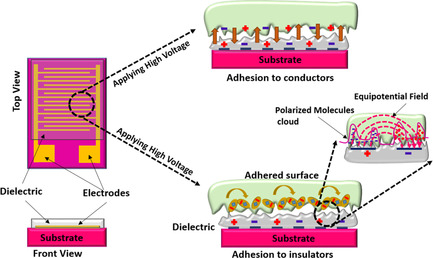Dust is an inevitable part of any home, but keeping surfaces free of dust can be a tedious chore. Traditional dusting methods like feather dusters and vacuum cleaners work well but have drawbacks like being time-consuming, creating a potential mess, and missing small areas. A newer dust removal option now emerging is the electroadhesive rollers, which uses static electricity rather than absorption or suction to pick up dust. These electroadhesive rollers offer an alternative dusting method that is not only effective but also less disruptive and easier to use.
How Electroadhesive Rollers Work
An electroadhesive roller functions by generating a strong static electric charge that attracts and picks up dust particles from surfaces. Then, the roller consists of a conductive material like metal or carbon fiber coated with an insulating polymer.
When the roller is plugged in and turned on, a high voltage electric current passes through the conductive core, resulting in a powerful static charge accumulating on the outer polymer coating. Thus,when the charged roller is rolled across a surface, it picks up dust particles via electrostatic attraction. The brush-like polymer coating then traps the dust inside its fibers.
Also, cleaning produced by electroadhesive rollers is chemical-free and dry, since it relies solely on static electricity rather than absorption. As the roller moves across surfaces, it continuously pulls dust away, leaving behind a virtually dust-free surface.
Potential Advantages
Electroadhesive rollers offer several benefits compared to traditional dusting and vacuuming methods:
Thorough yet Gentle – The static electricity removes almost all dust particles but is gentle enough to use on sensitive surfaces.
Minimal Surface Disturbance – Since no liquid is apply and suction is not use, dusting with an electroadhesive roller disturbs surfaces less than traditional methods.
Simpler & Faster – Electroadhesive rollers require only a single rolling motion across surfaces, making dust removal quicker and easier versus dusting each individual nook and cranny.
Close Access – The slim roller design allows the device to remove dust from cracks, grooves and corners where conventional feather dusters struggle to reach.
Less Messy – Electroadhesive rollers produce virtually no dust clouds or debris spray like vacuum cleaners can, creating a cleaner dusting experience.
Despite these benefits, drawbacks do still exist. Electroadhesive rollers require recharging, the polymer coating will eventually saturate and need replacing, and they cannot remove built-up dust from some crevices.
However, for everyday dust removal tasks on common surfaces, an electroadhesive roller offers a novel approach that balances effectiveness, convenience and minimal surface disruption. Finally, if traditional dusting leaves you wanting an easier alternative, an electroadhesive roller just may fit the dust-removing bill.

